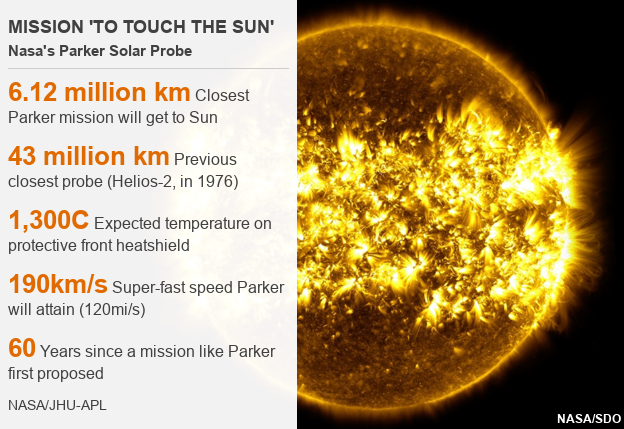The Parker Solar Probe rocket lifted off from Cape Canaveral, Florida.
The test is set to end up the quickest moving synthetic protest ever. Its information guarantees to break longstanding puzzles about the Sun's conduct.
It is the primary space specialty to be named after a living individual - astrophysicist Eugene Parker, 91, who initially portrayed sunlight based breeze in 1958.
"Amazing, here we go! We're in for some learning throughout the following quite a long while," he said in the wake of watching the lift-off from the scene. The University of Chicago educator said he had been gnawing his nails in expectation.
The Delta-IV Heavy rocket - which was conveying the test - propelled at 03:31 nearby time (07:31 GMT).
It came after a fizzled endeavor the earlier day, when a very late caution made the office miss its 65-minute climate window.
Simply under a hour after the dispatch, Nasa affirmed that the shuttle had effectively isolated and the test had been discharged into space.
The test will plunge inside this dubious climate, inspecting conditions, and getting to only 6.16 million km (3.83 million miles) from the Sun's searing "surface".
"I understand that probably won't sound that nearby, however envision the Sun and the Earth were a meter separated. Parker Solar Probe would be only 4cm far from the Sun," clarified Dr Nicky Fox, the British-conceived venture researcher who is associated to the Johns Hopkins Applied Physics Laboratory.
"We'll additionally be the quickest human-made question consistently, going around the Sun at paces of up to 690,000km/h (430,000mph) - New York to Tokyo in less than a moment!" she disclosed to BBC News.










No comments:
Post a Comment